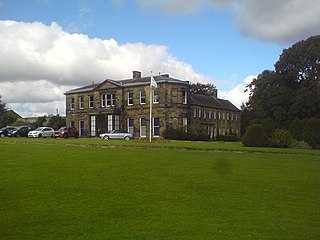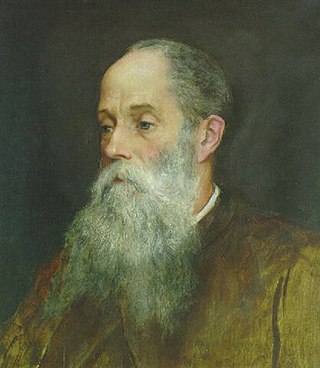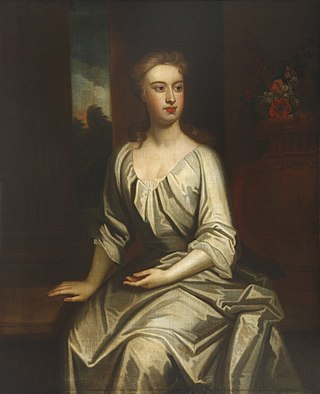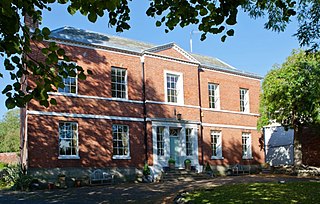
Farnley Hall is a stately home in Farnley, west Leeds, West Yorkshire, England. It is a grade II listed building. It was built in Elizabethan times by the Danbys. The manor is recorded in the 1086 Domesday Book as Fernelei, so it is probable that this house was a replacement for earlier medieval structures.

Horsforth is a town and civil parish in the City of Leeds, West Yorkshire, England, five miles north-west of Leeds city centre. Historically a village within the West Riding of Yorkshire, it had a population of 18,895 at the 2011 Census. It became part of the City of Leeds metropolitan borough in 1974. In 1999, a civil parish was created for the area, and the parish council voted to rename itself a town council. The area is within the Horsforth ward of Leeds City Council, which also includes the southern part of Rawdon.

Cannon Hall is a country house museum located between the villages of Cawthorne and High Hoyland some 5 miles (8 km) west of Barnsley, South Yorkshire, England. Originally the home of the Spencer and later the Spencer-Stanhope family, it now houses collections of fine furniture, paintings, ceramics and glassware. It at one time housed the Regimental Museum of the 13th/18th Royal Hussars and the Light Dragoons, which has now closed. Now occupying four rooms in the east wing is the "Family of Artists" exhibition on loan from the De Morgan Foundation, which draws on the links between the Spencer Stanhopes and the De Morgans.

Rawdon is a village and civil parish in the metropolitan borough of the City of Leeds, West Yorkshire, England. It sits on the River Aire and on the A65 south of Yeadon.

John Roddam Spencer Stanhope was an English artist associated with Edward Burne-Jones and George Frederic Watts and often regarded as a second-wave pre-Raphaelite. His work is also studied within the context of Aestheticism and British Symbolism. As a painter, Stanhope worked in oil, watercolor, fresco, tempera, and mixed media. His subject matter was mythological, allegorical, biblical, and contemporary. Stanhope was born in Cawthorne, near Barnsley, Yorkshire, England, and died in Florence, Italy. He was the uncle and teacher of the painter Evelyn De Morgan and encouraged then unknown local artist Abel Hold to exhibit at the Royal Academy, which he did 16 times.

Close House is a country estate near Heddon-on-the-Wall, Northumberland. The estate contains a Grade II* listed former mansion house, which is currently a private residence, and Close House Golf Club.

Walter Spencer-Stanhope, of Horsforth and Leeds, Yorkshire, was a British industrialist and a politician who sat in the House of Commons for various constituencies between 1775 and 1812.

Hornby Castle is a grade I listed fortified manor house on the edge of Wensleydale between Bedale and Leyburn, in the county of North Yorkshire, England.

Lady Elizabeth Hastings, also known as Lady Betty, was an English philanthropist, religious devotee and supporter of women's education. She was an intelligent and energetic woman, with a wide circle of connections, including artists, writers and designers, an astute business investor and proponent of innovative farming techniques.

Spencer-Stanhope is the family name of British landed gentry who for 200 years held Cannon Hall, a country house in South Yorkshire that since the 1950s has been a museum. The hyphenated form of the name is more common in British orthography, but American sources often omit the hyphen and alphabetize by "Stanhope."

Middleton Lodge is a Georgian Palladian mansion set within 200 acres (0.81 km2) of open countryside, on the outskirts of the village of Middleton Tyas, a mile or so off the A1 near Scotch Corner and a 15-minute drive from Darlington, County Durham.

Grantley Hall is an English country house located in North Yorkshire, England. It is situated near Grantley, about 5 miles (8 km) to the west of Ripon, on the banks of the River Skell. It is listed Grade II* on the National Heritage List for England, and the Japanese garden at the hall is listed Grade II on the Register of Historic Parks and Gardens.
Sir Walter Thomas William Spencer-Stanhope was a British Conservative politician and Volunteer officer.

Cannon Hall Farm is a working farm and tourist attraction close to the village of Cawthorne, near Barnsley in the English county of South Yorkshire. Open to visitors since 1989, it is owned and run by the Nicholson family. The farm was voted Best Tourist Experience at the Welcome to Yorkshire White Rose Awards 2011. Cannon Hall Farm was once the home farm for Cannon Hall, built by the Spencer-Stanhope family and now a museum. Roger Nicholson, who developed the current farm and attractions inherited the land when he was 16. The farm itself raises sheep, goats, and pigs, with over 750 lambs reared, and 400 ewes and 800 piglets produced annually. The site's visitor attractions include an adventure playground, large tube maze, farm shop, delicatessen, gift and toy shop, and restaurant.

Wood Hall Hotel and Spa, Trip Lane, is an AA four-star, 44-room country house hotel with an AA two-rosette restaurant, about one mile from the English village of Linton, West Yorkshire. A Grade II listed building that was once owned by the Vavasour and Scott families.
John Spencer Stanhope (1787–1873) was an English landowner and antiquarian.

The Goole Steam Shipping Company was a company based in Goole, England from 1864 to 1905 which operated steamship services from Goole to northern European ports.

Breedon Hall, Breedon on the Hill in north-west Leicestershire, is a house of historical significance and is listed on the English Heritage Register. In 1620 it was a small timber-framed cottage. Soon after it was bought by the Curzon family and was successively enlarged until 1777 when it was given a new Georgian front. It was the ancestral home of the Curzons for over three centuries and then bought by the Shields family. Today it is owned by the Meynell family and provides bed-and-breakfast accommodation.

Easby Hall near Richmond in North Yorkshire, England is a building of historical significance and is listed on the English Heritage Register. Built in 1729 by the Reverend William Smith, Easby Hall became the home of many notable people for the next two and a half centuries. It now provides bed and breakfast accommodation and is a venue for special events.
Lord Lonsdale's ninepins, Sir James's ninepins, or Lowther's ninepins, was a derogatory label applied to certain Members of Parliament during the Georgian era who owed their Parliamentary seats to the patronage of James Lowther, 1st Earl of Lonsdale (1736–1802).





















